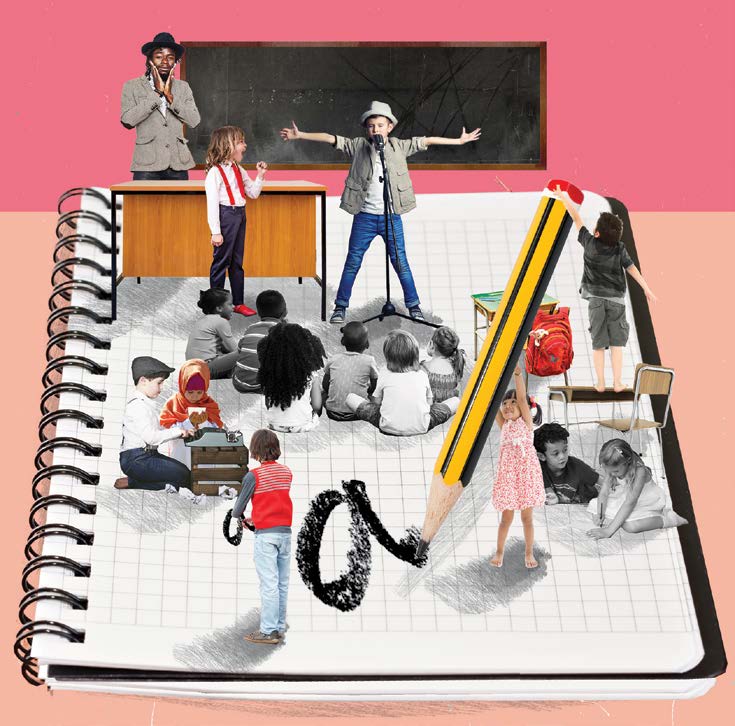Share this page
Illustration: Tanya Cooper/Illustration Web

Every student studies poetry at some point, but that doesn’t mean they like it. Why? Because, often, they do not see themselves, their feelings, in the traditional approach. So how do we create that connection? Consider a different approach! Call it spoken word, performance or slam poetry — this art form is on the rise and already hugely popular among our youth. Captivate your class with videos of spoken word poets spitting their stories into microphones in high-energy performances, and if there is an opportunity to experience a poet live, exhilaration and inspiration levels will skyrocket. The next time you teach poetry, think outside the box and look beyond the written word to inspire student voice, advocacy, empathy and empowerment.
— Holly Painter, OCT National Director, Spoken Word Canada
➞ Have a classroom idea to share? Send it to us at ps@oct.ca and your advice could be published in an upcoming issue! Check out our Professional Practice Research archive at oct-oeeo.ca/research.
By Stefan Dubowski
Do you have students who effortlessly juggle their social networking accounts, blogs and video feeds, all while posting multiple times an hour? These days, classrooms are chock full of these digital media masters, but are they analyzing and assessing what they encounter online? For that, they need context, which is what MediaSmarts (mediasmarts.ca) can help you provide.
This not-for-profit charity has a Teacher Resources section (in both English and French) with lessons, activities and tools to boost your class’s social savvy. You can easily browse resources by grade (K to 12), resource (games, guides, lesson plans, tip sheets, tutorials and workshops), topic (cellphones and texting, online ethics, cyberbullying, privacy and more) and media (internet and mobile, movies, music, television and video games).
Curious about the digital landscape across Canadian schools? The Digital Literacy Framework section explains how students at different levels use the web. Want to delve deeper? There is a discussion paper that maps digital literacy policy and practice throughout the country, as well as a section that describes digital and media literacy outcomes by province and territory.
The site also lists resources that specific boards and schools are licensed to use, including class tutorials and professional development workshops across the K to 12 spectrum. Click on Find Out What You’re Licensed For, to see which ones you have access to.
According to a MediaSmarts study, today’s teens are digital media aware — they tend to avoid touchy topics like politics, religion and race in their posts and they don’t connect with strangers. However, what they aren’t seeing is social platforms as for-profit businesses, and most don’t read privacy policies and terms of service. The organization believes that there is “a need to educate youth about their rights and responsibilities as digital citizens,” so they can become masters of modern-day media.